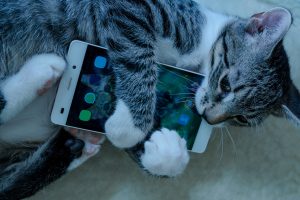Integrating digital tools into the classroom seems to be the trendiest topic in education. But its more than just using digital tools, its about selecting the best tool that will accomplish a specific task and support an intentional learning experience.

I will fully admit to adding technology for technologies sake in many of my lessons. This was not intentional, but a result of me not fully understanding how the technology works and how it could be applied in the lesson. For example, getting students to use a digital platform to post a written composition of their understanding is no different than them writing a paragraph in class.
FEAR NOT! This is not the only way to inte

grate technology, digital tools or social media platforms. There are projects and assignments that allow students to use digital tools to create something new and unique AND help them understand course content on another level.
Now here’s the part of the blog where you (the reader) thinks I have all the answers. Well I’m sorry to say I do NOT. However, here are a few of my attempts (both good and bad) to intentionally and meaningfully integrate digital tools into my students’ learning.
HISTORICAL CHARACTER PROFILE: Students were given a character description of rebellion leader from some point in 20th century history. They then created a name, profile, and background for that character on a social media site such as: instagram, snap chat, twitter, facebook, or tik tok. Students did not have to post the profile but did have to format it in the same way. After creating the profile, students had to make several posts/entries about the time in history that this character existed. For example, if they were apart of a political protest, the students would create a post about that event.
KAHOOT: Kahoot is a favorite of my students, so I thought I would flip its use from me testing their knowledge, to them showing me their understanding. Although it was fun, I found that kahoot was not a great demonstration of their understanding. However, it was a great way to get to know students and share a li
HOW TO VIDEO: I have used the how-to video format in several ways. In physical education I have students teach me a sports skill of their choice. This allows me to see the physical skills, but also makes students think about how a movement skill is broken into steps. The other way I have used the how-to video is in inquiry. Students were asked to learn a new skill and then create a step by step instructional video to teach someone else their new skill.

I think the most important thing as teachers we can do is TRY! Try new things, implement technologies and digital tools and see what happens. The only way we can build skills to integrate digital tools purposefully into educational pedagogy is to try. I do not know about you, but I learn the most when I make a mistake. Moving forward in my teaching I plan to fail often when it comes to integrating digital tools.
Second most important thing that educators can do is to make connections with students out-of-school experiences. This is a hard one, because in a class of 30 individuals it is challenging to personalize the lesson to each student. This is where CHOICE comes into play. The more choice students are offered the more likely they will be engaged in the content.

THIS IS AN IDEAL AND SHOULD NOT BE AN EXPECTATION OF ANY TEACHER. I know how hard it is to create an assignment that allows choice, while at the same time meets the same learning outcomes. Communication and collaboration are a challenge in the digital learning environment. However, the continual discussion and experimentation with various digital tools is key to improving and evolving pedagogy.
Images retrieved from the public domain Pixabay
I loved reading about your three examples of using tech! Very creative and engaging for the student – love it!
All of your examples are fantastic. I could re-jig these ideas for an elementary setting and get the students very excited about it. The younger students love to think they are experts on all the social media but do not understand it fully. It would be a great way to teach digital citizenship and choices have consequences surrounding social media.
Thanks for the great post!
Awesome post! I also loved the examples you shared, particularly the Historical character profile!
I think most teachers started with using technology for the sake of technology but maybe that should be viewed as an important step in breaking the barrier. I know quite a few teachers who refuse to use technology because they fear it or their own lack of understanding. With the superficial steps, comes greater confidence and then teachers can get to the good stuff. We have to give ourselves a break and not expect ourselves to jump into the deep end with something new. For beginners, it is good enough to know that there is a deep end and we want to get there eventually.